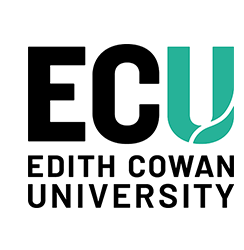Author Identifier (ORCID)
Xingang Li: https://orcid.org/0000-0003-0252-154X
Wei Wang: https://orcid.org/0000-0002-1430-1360
Abstract
Background: Immunoglobulin G (IgG) N-glycosylation plays a vital role in the pathogenesis of autoimmune disorders, inflammatory diseases, and viral infections. While various models of serum IgG N-glycosylation have been developed to identify individuals at high risk for relevant diseases, reference intervals (RIs) for the levels of IgG N-glycans have not been established yet. Identifying RIs for serum IgG N-glycans closely associated with biological aging and disease risk contributes to predictive, preventive, and personalized medicine (PPPM/3PM), which results in improvement of patients’ outcomes, enhancement of healthcare efficiency, and in reducing burden of chronic diseases. This study is aimed at defining the age- and sex-specific RI in healthy Chinese adults. Methods: The healthy participants aged 18 years and above were recruited from Shandong and Guangdong provinces. Serum IgG N-glycans were analyzed using hydrophilic interaction liquid chromatography using ultra-performance liquid chromatography (HILIC-UPLC), quantifying 24 glycan peaks (GPs). The 2.5th and 97.5th percentile reference limits for the glycans and their derived glycosylation features were used to define the 95 percentile of the reference distribution for glycan levels and derived glycosylation features. Results: A total of 927 participants (median age 52 years; 566 women and 361 men) were included. Of 24 glycan peaks, 14 differed significantly between sexes, and 18 varied by age. Age- and sex-specific RIs were independently calculated for all 24 glycan peaks. For key glycosylation features, the RIs were 87.37–97.63% for fucosylation, 11.08–21.69% for bisecting N-acetylglucosamine (GlcNAc), 15.37–30.10% for sialylation, 15.93–41.91% for agalactosylation (G0), 22.60–36.93% for monogalactosylation (G1), and 10.46–26.99% for digalactosylation (G2). Individuals whose glycan indices locate in these RIs could be considered in a healthy glycosylation level. Conclusions: This study identified and verified significant age- and sex-related differences in IgG N-glycosylation features and established RIs for IgG N-glycans in healthy Chinese adults. These RIs may serve as a useful benchmark for identifying individuals with abnormal glycosylation profiles. In PPPM/3PM, IgG N-glycosylation RIs can predict disease risk, enable targeted prevention, and support personalized medical and health plans that consider age and gender.
Document Type
Journal Article
Date of Publication
1-1-2025
Volume
16
Publication Title
EPMA Journal
Publisher
Springer
School
Nutrition and Health Innovation Research Institute / School of Medical and Health Sciences
Funders
National Natural Science Foundation of China (81773527, 81973138, 81370925) / Joint Fund of National Natural Science Foundation of China and National Health and Medical Research Council (81561128020) / Western Australian Future Health Research and Innovation Fund (WANMA/EL2023-24/2) / Youth Science Foundation of Shandong First Medical University (202201–028)
Grant Number
NHMRC Number : APP1112767
Creative Commons License

This work is licensed under a Creative Commons Attribution-No Derivative Works 4.0 License.
First Page
555
Last Page
569


Comments
This is an Author's Accepted Manuscript of: Liu, C., Wang, Y., Li, X., Xu, X., Xu, R., Tian, C., Chen, Z., Lu, X., Li, Y., Wang, M., Tang, Z., Chen, X., Ding, G., Tan, X., Li, D., Hou, H., & Wang, W. (2025). Establishment of reference intervals for serum immunoglobulin G N-glycosylation features in healthy Chinese adults: A nationwide survey in the framework of predictive, preventive, and personalized medicine. EPMA Journal, 16, 555-569. https://doi.org/10.1007/s13167-025-00416-5
This version of the article has been accepted for publication, after peer review (when applicable) and is subject to Springer Nature’s AM terms of use, but is not the Version of Record and does not reflect post-acceptance improvements, or any corrections. The Version of Record is available online at: http://dx.doi.org/10.1007/s13167-025-00416-5